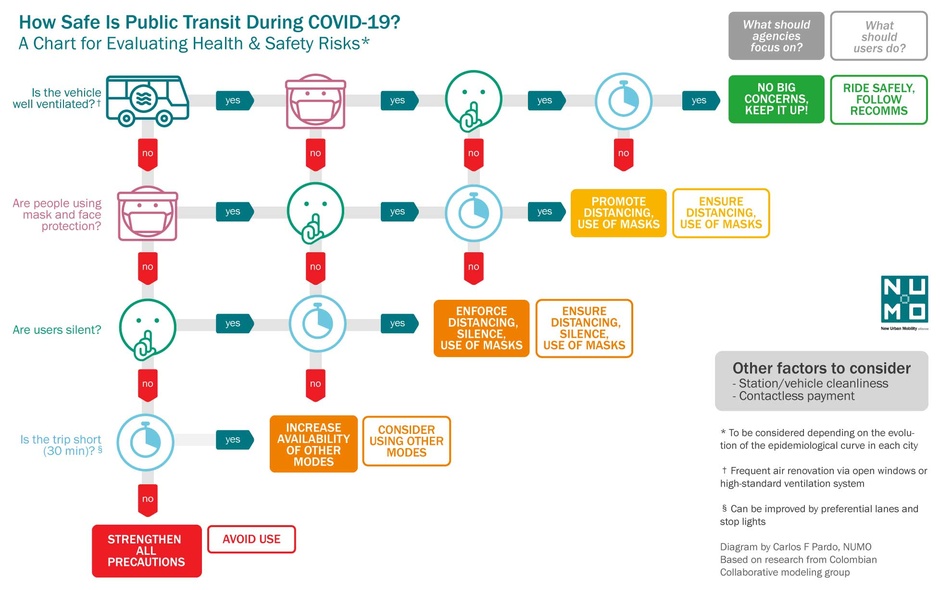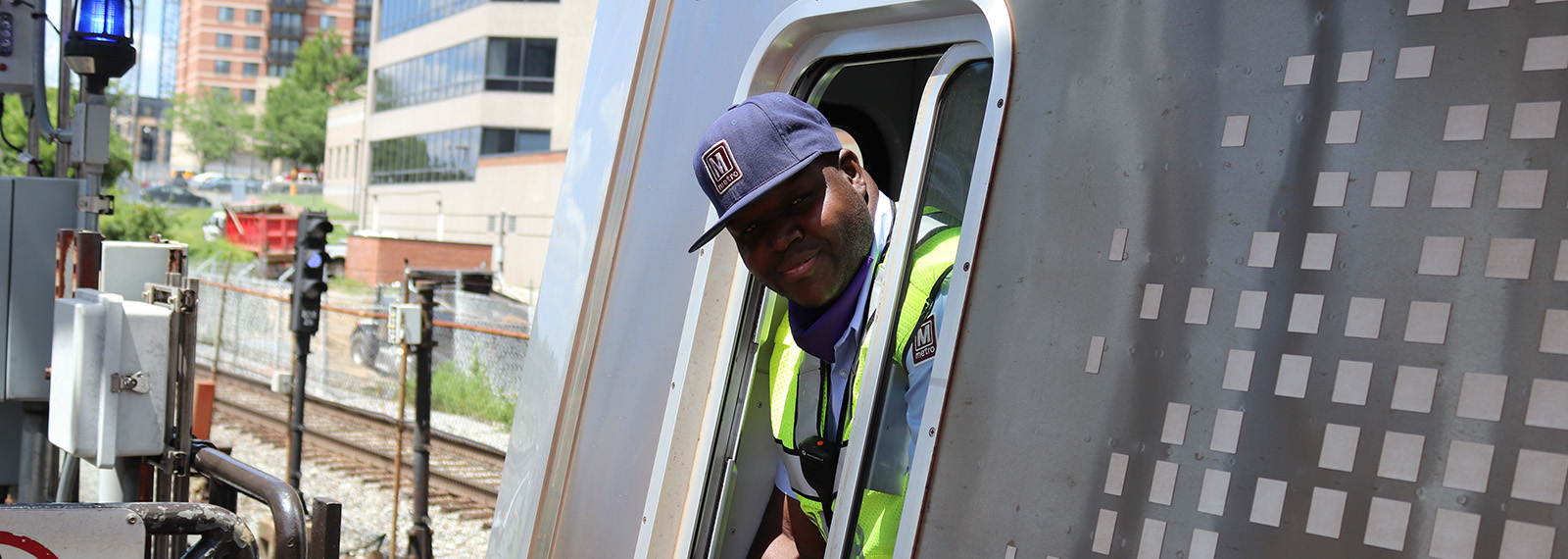 Overview
Overview
As public transportation agencies worldwide adjust public safety guidelines and operations in response to the decimating impacts of the COVID-19 pandemic, all while combatting unprecedented ridership and financial losses, NUMO developed a graphic outlining the relationship between five key factors that, when combined, determine a safe return to higher occupancies in public transit operations while preventing transmission.
The key factors, listed below, were identified in research published by the Collaborative Group for Modeling COVID and Mobility in Colombia:
- User behavior related to masks, eye protection and traveling in silence to reduce airborne transmission
- Type of vehicle ventilation system and frequency of air renewal
- Proximity of riders
- Trip duration
- Cleaning and disinfecting of high-contact surfaces
The graphic provides public agencies with concrete recommendations for mitigating risk of transmission as well as adapting their own guidelines and mandates regarding safe operating conditions. Additionally, the graphic addresses transit users by laying out actions they can take to evaluate health and safety risks based on the specific operating conditions of the vehicle, behavior of other users and trip duration.
July 2022 Update: As COVID-19 variants continue to appear, contagion risk has varied and more attention has been paid to one or more of the factors included in this graphic. As a result, while the recommendations still hold, the relative importance of each factor may vary. Given the rapid evolution of the pandemic, it is advised to complement this material with updated research.
Learn more about the graphic.
Spanish translation of the graphic.
Header image: Elvert Barnes / Flickr
